Flux-gradient Relations
Learning Objective
- Explain what can we learn from electrical circuits (Ohm’s Law) to describe heat and mass transfer on a land-atmosphere interface.
- Discuss is we can we use the K-Theory introduced for the momentum transfer to relate the gradients of temperature, humidity and trace gas concentrations to fluxes.
- Making the K-Theory useful - Reynold’s analogy (similarity) and aerodynamic approach.
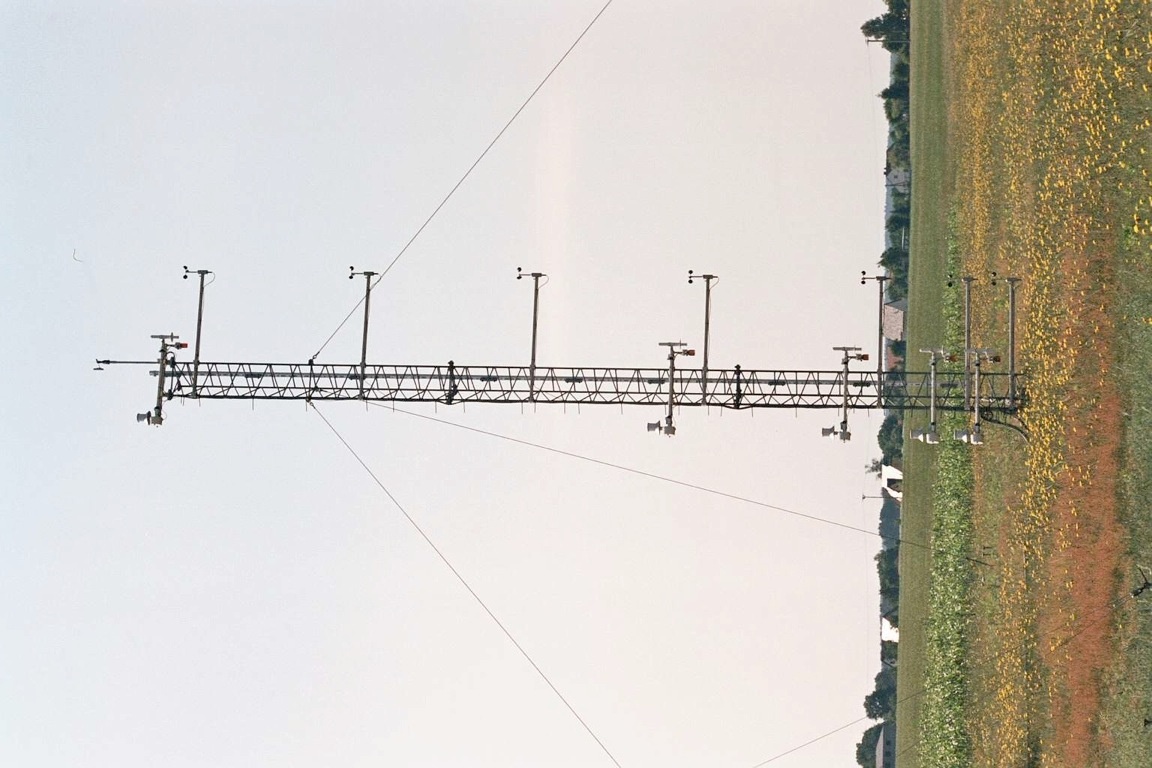
Energy balance and turbulence
\[ \color{orange}{R_n} = \color{red}{H} + \color{blue}{LE} + \color{purple}{G} + \color{green}{\Delta S} \tag{1}\]
Turbulent exchange
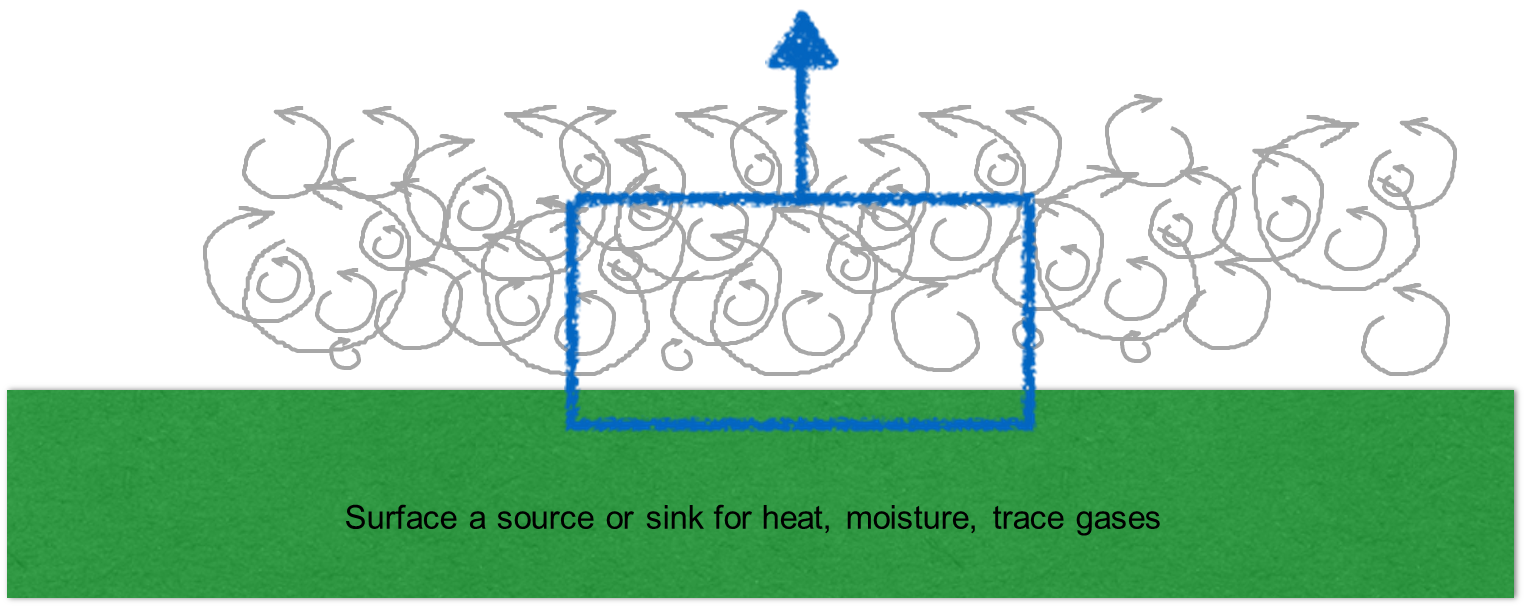
Vertical turbulent flux of sensible heat, latent heat and trace gases
Resistance Approach - Ohm’s Law
- To describe land-atmosphere exchange of heat, mass and momentum we can identify resistances of different sub-processes, e.g. of plant components (leaf, xylem, root, etc.), soil, whole PBL, etc.
- Resistance relate the flux to a measured difference Δs across part of a system. For a given difference:
- Low resistance - high flux densityHigh resistance - low flux density
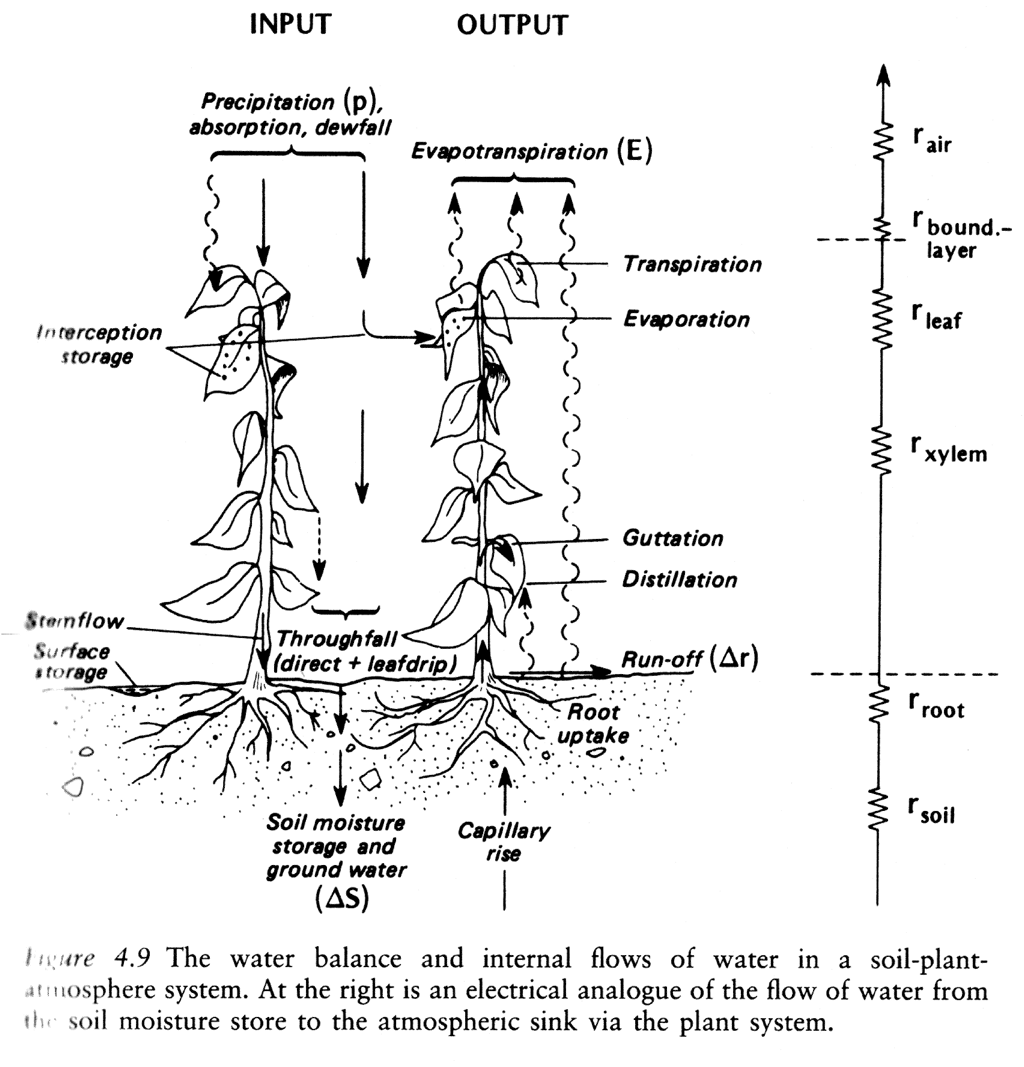
Inspired by Ohm’s Law
We can define a scalar flux (\(F_c\) in \(m^{-2} s^{-1}\)) in terms of storage (\(\Delta S\) in \(m^{-3}\)) and either resistance (\(r\) in \(s m^{-1}\)) or conductance (\(g\) in \(m s^{-1}\)):
\[ F_c = \frac{\Delta S}{r} \tag{2}\]
\[ F_c = g \Delta S \tag{3}\]
Resistances vs. Conductances
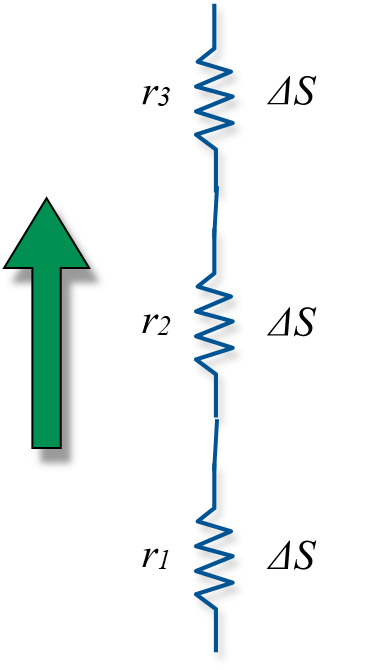
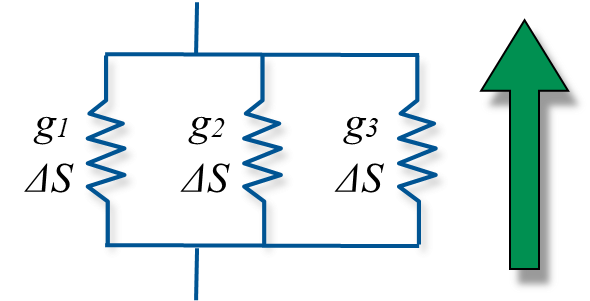
Resistances at the surface-atmosphere interface
- Several types of resistances / conductances can be conceived of, depending on the transport processes in the layer, e.g.
- \(r_a\) (or \(g_a\)) - aerodynamic resistance (conductance) in the turbulent surface layer. Depends on degree of turbulent activity.
- \(r_b\) (or \(g_b\)) - laminar boundary layer resistance (conductance) in the LBL immediately adjacent to surfaces. Depends on molecular diffusivities and thickness is the key variable.
- \(r_s\) (or \(g_s\)) - stomatal resistance (conductance) of leaf pores. Depends on stomatal aperture (light, T, VPD, \(CO_2\) conc., leaf water potential)
- \(r_c\) (or \(g_c\)) - canopy or surface resistance (conductance). Integrated resistance of complete surface system including \(r_s\) and \(r_b\) of leaves and air in canopy.
Aerodynamic resistances
\[ \tau = \rho \frac{\Delta\bar{u}}{r_{aM}} \approx \rho \frac{\bar{u_z}}{r_{aM (0-z)}} \tag{4}\]
- Where \(\tau\) is momentum flux density (in \(N m^{-2}\) aka \(Pa\))
- \(r_{aM}\) is aerodynamic resistance (in \(s m^{-1}\))
- \(\bar{u_z}\) is mean wind speed at z (in \(m s^{-1}\))
- \(\rho\) is density of air (in \(kg m^{-3}\))
Aerodynamic resistances
\[ E = - \frac{\Delta\bar{\rho_v}}{r_{av}} \tag{6}\]
- Where \(E\) is water vapor flux density (in \(kg m^{-2} s^{-1}\))
- \(r_{av}\) is aerodynamic resistance (in \(s m^{-1}\))
- \(\bar{\rho_v}\) is mean partial vapor density of water (in \(kg m^{-3}\))
\[ F_c = - \frac{\Delta\bar{\rho_c}}{r_{ac}} \tag{7}\]
- Where \(F_c\) is trace gas flux density (in \(kg m^{-2} s^{-1}\))
- \(r_{ac}\) is aerodynamic resistance (in \(s m^{-1}\))
- \(\bar{\rho_c}\) is mean partial density of the trace gas (in \(kg m^{-3}\))
Flux-gradient relationships
- For small-scale turbulence, the flux is down the concentration gradient, i.e
- momentum flux density is fast \(\rightarrow\) slow
- sensible heat flux density is ?? \(\rightarrow\) ??
- water vapor flux density is wet \(\rightarrow\) dry
- trace gas flux density is high concentration \(\rightarrow\) low concentration
Boussinesq suggested that turbulent transfer could be considered analogous to molecular diffusion - eddies replace molecules:
- Flux density = transfer efficiency \(\times\) gradient of entity
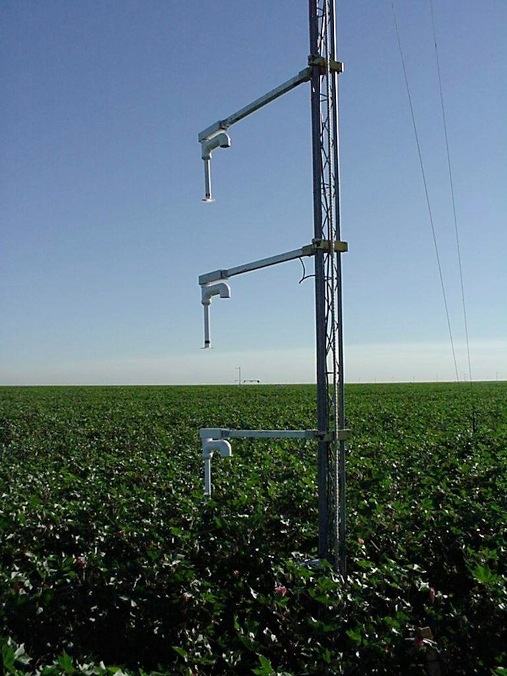
Sensible Heat Flux Density (iClicker)
Sensible heat flux density is directed from ?? \(\rightarrow\) ??
- A cold \(\rightarrow\) hot
- B hot \(\rightarrow\) cold
- C dry \(\rightarrow\) wet
- D sunny \(\rightarrow\) dark

K-Theory
If \(K_M\), \(K_H\), \(K_V\) and \(K_C\) are eddy diffusivities (in \(m^2 s{-1}\)).
\[ \tau = \rho K_m \frac{\delta\bar{u}}{\delta z} \]
\[ LE = -K_v \frac{\delta\bar{\rho_v}}{\delta z} \]
\[ H = -C_a K_H \frac{\delta\bar{\Theta}}{\delta z} \]
\[ F_c = -K_c \frac{\delta\bar{\rho_c}}{\delta z} \]
K-Theory - limitations
- K’s are extremely variable in time, space and atmospheric conditions (stability).
- Requires instruments capable of measuring small vertical gradients (differences) to high accuracy.
- Also the K-theory does not account for counter-gradient transport.
- In the atmosphere, sometimes fluxes are counter gradient. Due to a large eddies which (briefly) transport flux regardless of background average (e.g. within plant canopies)
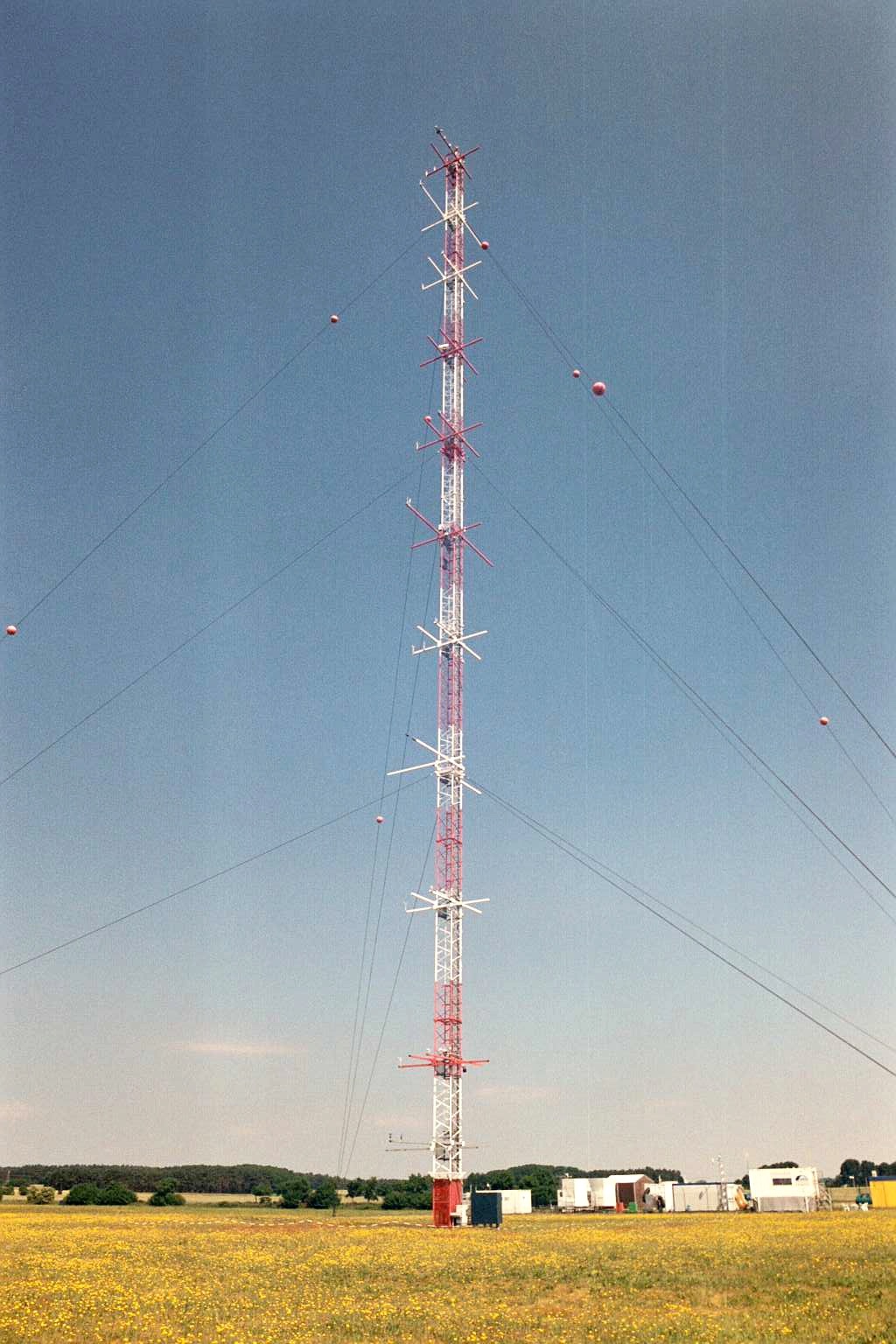
Reynolds Analogy
Reynolds surmised that in fully turbulent flow (high \(R_e\)) eddies would carry entities with equal ease (similarity principle):
\(K_m = K_H = K_v = K_c\)
- and consequently, over the same layer
\(r_{am} = r_{aH} = r_{av} = r_{ac}\)
Practically this implies that we must only determine one of the K’s
Generally held that close to the ground this applies, except that \(K_M\) becomes increasingly dissimilar as instability increases, and then:
\(K_x \propto K_M^2\)
Using K-theory & Reynold’s Analogy to measure fluxes
Assumptions:
- Neutral stability: buoyancy effects are absent.
- Steady state: no marked shifts in the radiation or wind fields during the observation period.
- Constancy of fluxes with height: no vertical divergence or convergence.
- Similarity of all transfer coefficients.
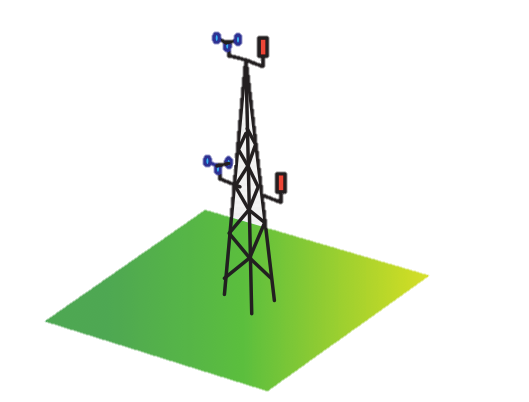
Reynolds Analogy
If we assume a similarity, we can take ratios of flux-gradient equations, and eliminate the K’s. If one flux is known (usually \(\tau\) from a measured wind profile), we can obtain other if their gradients are measured, e.g.
\[ \frac{\tau}{H} = \frac{\cancel{\rho}\cancel{K_M}(\Delta\bar{u}/\cancel{\Delta z})}{-\cancel{\rho}c_a\cancel{K_H}(\Delta\bar{\Theta}/\cancel{\Delta z})} = \frac{\Delta \bar{u}}{-c_a \Delta \bar{\Theta}} \tag{8}\]
- where \(C_a = \rho c_a\)
Aerodynamic Approach
The aerodynamic approach requires the measurement [or prediction in a model] of mean wind u and relevant property (e.g. potential temperature \(\Theta\) absolute humidity \(\rho_v\) ) at same two heights [or layers]. It relies on the similarity of \(K_M\) and \(K_x\).
Assumptions:
- Neutral stability - buoyancy effects are absent.
- Steady state - no marked shifts in the radiation or wind fields during the observation period.
- Constancy of fluxes with height - no vertical divergence or convergence.
- Similarity of all transfer coefficients.

Aerodynamic Approach ( 1/3)
From the neutral wind law:
\[ \begin{align} \bar{u_2} =\frac{u*}{k} (ln z_2 - ln z_0) \\ \nonumber \bar{u_1} =\frac{u*}{k} (ln z_1 - ln z_0) \\ \nonumber (\bar{u_2} - \bar{u_1})=\frac{u*}{k} (ln z_2 - ln z_1) \nonumber \end{align} \]
rearranging:
\[ \frac{\Delta \bar{u}}{ln(z_2/z_1)} = u_*/k \tag{9}\]
Aerodynamic Approach ( 2/3)
Since \(\tau \approx \rho u_*^2\); we can redefine:
\[ \tau = \rho k^2 [\Delta\bar{u}/ln(z_2/z_1)]^2 \tag{10}\]
And substitute Equation 10 into Equation 8 and solve \(H\)
Aerodynamic Approach ( 3/3)
For Sensible Heat Flux (\(H\)):
\[ \begin{align} H&=\frac{-\tau c_a \Delta\bar{\Theta}}{\Delta\bar{u}} \\ \nonumber &=\frac{-\rho k^2 \Delta\bar{u}^2c_a \Delta\bar{\Theta}}{\Delta\bar{u}[ln(z_2/z_1)]^2} \\ \nonumber &=\frac{-\rho k^2 \Delta\bar{u} c_a \Delta\bar{\Theta}}{[ln(z_2/z_1)]^2} \end{align} \tag{11}\]
For Latent Heat Flux (\(LE\)):
\[ LE = -\frac{L_v k^2 \Delta\bar{u} \Delta\bar{\rho_v}}{[ln(z_2/z_1)]^2} \]

Take Home Points
- Resistance allow us to handle the flow of energy and mass though a complex system such as a land-atmosphere interface. Resistances can be formulated in series or in parallel.
- Resistance formulations and flux-gradient relations (using eddy diffusivities, i.e. K’s) can be used to describe sensible, latent heat and trace gas transfer.
- Reynolds analogy assumes that the eddy diffusivities for different scalars are similar, i.e. \(K_M\) = \(K_H\) = \(K_E\) = \(K_C\)
- This allows us to overcome the severe restrictions of using K-theory - as in the aerodynamic approach the K’s cancel out.